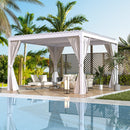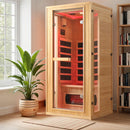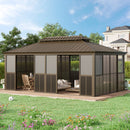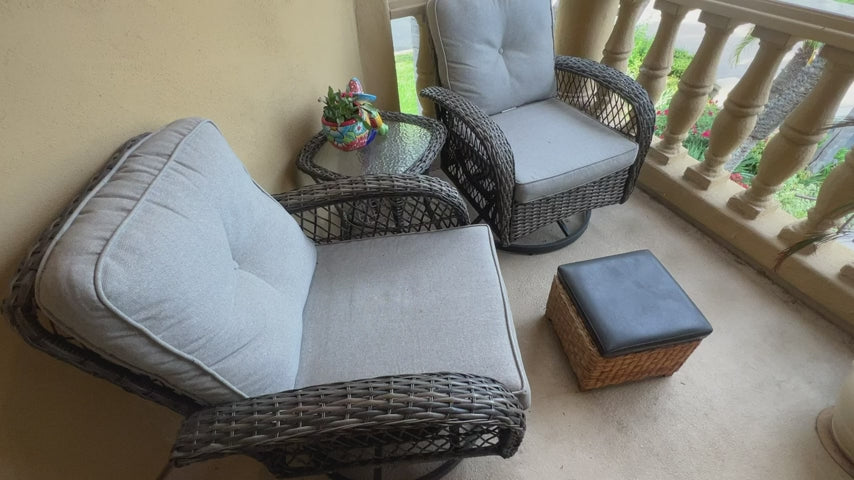FAQ - Expandable House
by
Kelsey R.
14 Apr 2025

General Questions
Are expandable container houses worth it?
There are 3 main advantages of an expandable container house:
Cost-effective: The cost of expandable container houses is much cheaper than traditional houses while maintaining good quality.
Quick Construction: Expandable houses are prefabricated in the factory instead of being built on-site, which is efficient and time-saving.
Customizable Features: Expandable houses allow customers to choose their preferred interior and exterior designs.
Cost-effective: The cost of expandable container houses is much cheaper than traditional houses while maintaining good quality.
Quick Construction: Expandable houses are prefabricated in the factory instead of being built on-site, which is efficient and time-saving.
Customizable Features: Expandable houses allow customers to choose their preferred interior and exterior designs.
Is it cheaper to build or buy a prefab house?
It’s cheaper to buy a prefab house than build one because the manufacturer has a professional fabricating system and standard product templates. The factory also can purchase all the required materials at a lower price from the suppliers.
How much does a folding home cost?
Normally, most foldable houses on the market cost from $50k to $100k, the final price can change depending on the sizes, materials, finishes, and other features.
How much money do I need to build a container home?
The cost of building a container home depends on its square foot, structural design, and other additional features. In most cases, the average cost is between $50,000 and $100,000 or more.
Are prefab homes cheaper than mobile homes?
Typically, prefab homes are more expensive than traditional mobile homes because they are larger and built with quality materials. Meanwhile, the resale value of a prefab house is also higher than a traditional mobile home over time.
Why are modular homes so cheap?
Modular homes and prefab homes are cheap because their structure is modularized and all the components are prefabricated with a standard. This process ensures cheap and efficient home manufacturing since their cost per unit is much lower.
What is the cheapest way to expand a house?
What's the difference between a mobile home and a prefab home?
Prefab homes are an upgraded version of mobile homes. Both of them are prefabricated and assembled in the factory and directly transported to the buyer’s appointed site. However, a mobile home is built on a permanent chassis, while the prefab home needs to be placed on an on-site foundation.
What are the disadvantages of a container home?
Downsides of a container home:
1.Transportation: It takes a flatbed truck to deliver your container home to the location, and a crane is also required for the unloading.
2.Building Regulations: It’s necessary to consult local authorities about the requirements for setting up a container home on your land.
3.Foundation and Plumbing: A solid base is required for a container home, and you need to install the pipelines for utilities, including electricity, sewer, and water.
1.Transportation: It takes a flatbed truck to deliver your container home to the location, and a crane is also required for the unloading.
2.Building Regulations: It’s necessary to consult local authorities about the requirements for setting up a container home on your land.
3.Foundation and Plumbing: A solid base is required for a container home, and you need to install the pipelines for utilities, including electricity, sewer, and water.
Installation Notes
How to legally build a container home?
Laws and building regulations are different across the states. You may need to ask the local government and apply for permission before setting up a prefab house, the permitting includes dimensions, electricity, plumbing, etc.
Do prefab homes need a foundation?
It’s essential to set up a prefab house on a sturdy foundation. Concrete slabs and pier foundations are two common types of bases for supporting the prefab house. Make sure they are thick enough for greater stability and plumbing work.
Do prefab homes have plumbing?
The utilities and plumbing of a prefab house are installed after it’s been prefabricated. But you still need to tie them into the existing public utility system to ensure their functionality, such as the electricity, sewer and drainage system, and water supply.
Can you put AC in a shipping container?
Like traditional homes, an AC system can also be added to the container homes to provide proper ventilation and air conditioning. Either the roof or the walls are suitable places for the installation of the AC system.
How are prefab homes delivered?
The delivery of a prefab home includes 4 steps:
Loading: Load the prefab home on a flatbed truck or semi-trailer.
Escort Service: If the load is oversized, a pilot car or escort service is needed.
Transportation: Check the road condition and ship it to the destination.
Schedule a Crane: A crane is needed to unload your prefab house after it arrives at your location.
Loading: Load the prefab home on a flatbed truck or semi-trailer.
Escort Service: If the load is oversized, a pilot car or escort service is needed.
Transportation: Check the road condition and ship it to the destination.
Schedule a Crane: A crane is needed to unload your prefab house after it arrives at your location.
How many bedrooms can fit in a 40ft container?
Normally, a 40ft expandable container home with a standard space arrangement often provides 3 bedrooms. For instance, the EROMMY expandable container home has 3 bedrooms with a toilet, a living room, a kitchen, and a dining area.
More Tips
Does mold grow in shipping containers?
Mold and mildew can grow in your bathroom and kitchen if your container house is located in a humid environment. To prevent them, keep your room well-ventilated and add a dehumidifier in the home to reduce the humidity.
Do container homes get hot?
Traditional container homes can get hot in summer due to their metal structure, but EROMMY offers various solutions to reduce heat conduction. Reflective glass and thermal-insulated walls and roofs are the key features that keep your home cool.
Are expandable prefab houses energy-efficient?
Expandable prefab houses are energy-efficient because they’re built with high-quality and eco-friendly materials. The factory also developed a streamlined manufacturing process to ensure all the components are produced with the same standard.
Are container homes safe in hurricanes?
The construction of most container homes is wind-resistant. Generally, a 40-foot container house can withstand winds up to 70 mph.
How long do expandable houses last?
Normally, a high-quality expandable container house can last around 30 years. Its lifespan can also be prolonged if it’s been maintained properly.

















